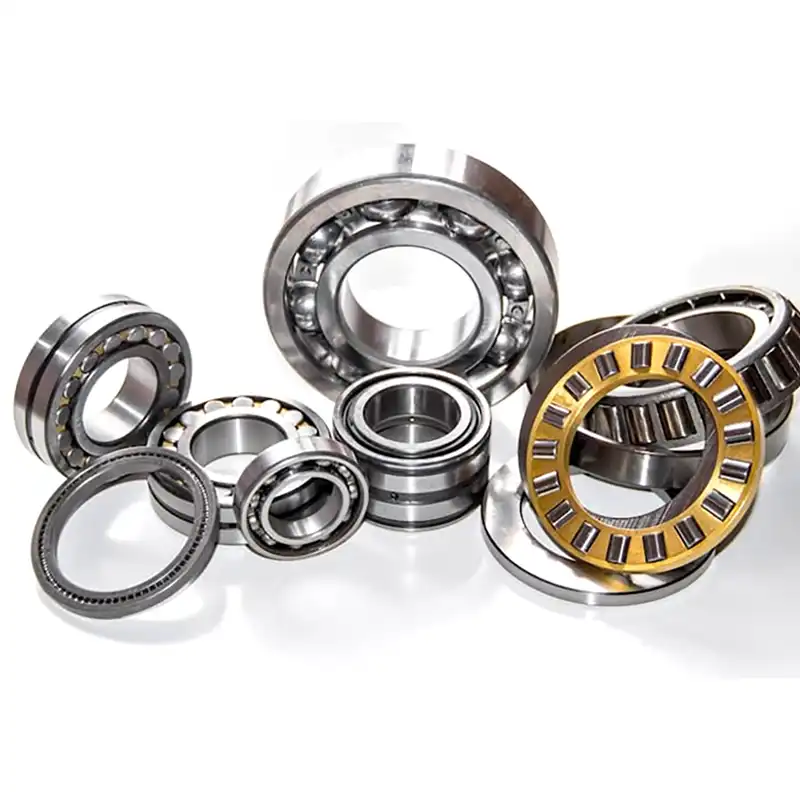As we all know bearings can be widely applied in various industries, and this is the complete guide to the types of bearings.
Let’s dive into the bearing types.
What Are Bearings?
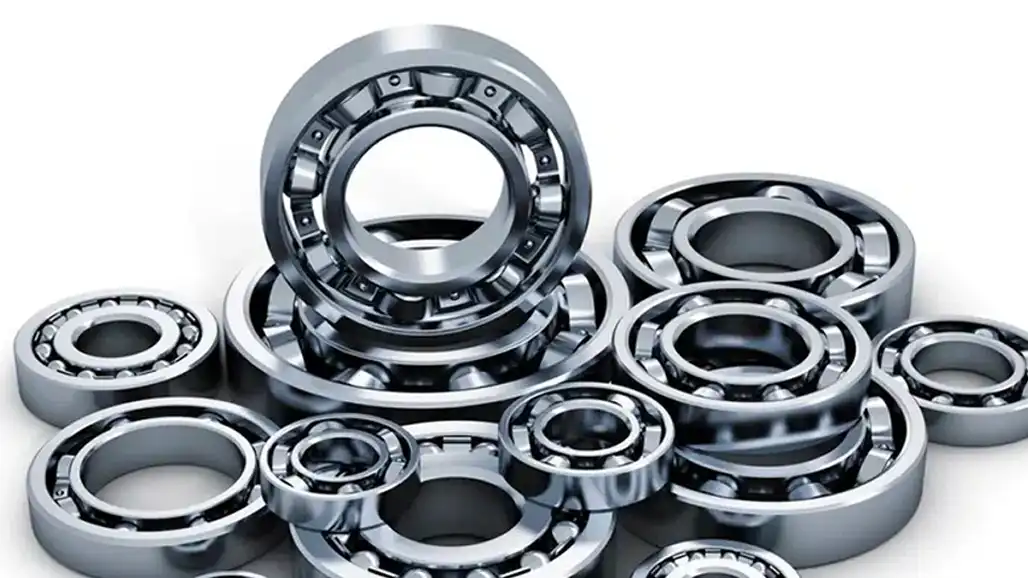
A bearing is a machine element that constrains relative motion to only the desired motion and reduces friction between moving parts.
The design of the bearing may, for example, provide for free linear movement of the moving part or for free rotation around a fixed axis; or, it may prevent a motion by controlling the vectors of normal forces that bear on the moving parts. Most bearings facilitate the desired motion by minimizing friction. Bearings are classified broadly according to the type of operation, the motions allowed, or the directions of the loads (forces) applied to the parts.
Source from Wikipedia: Bearing (mechanical)
So, a bearing is a machine element that provides support for rotating or oscillating parts, reducing friction and allowing for smooth movement between connected components.
What Is the Purpose of Bearings?
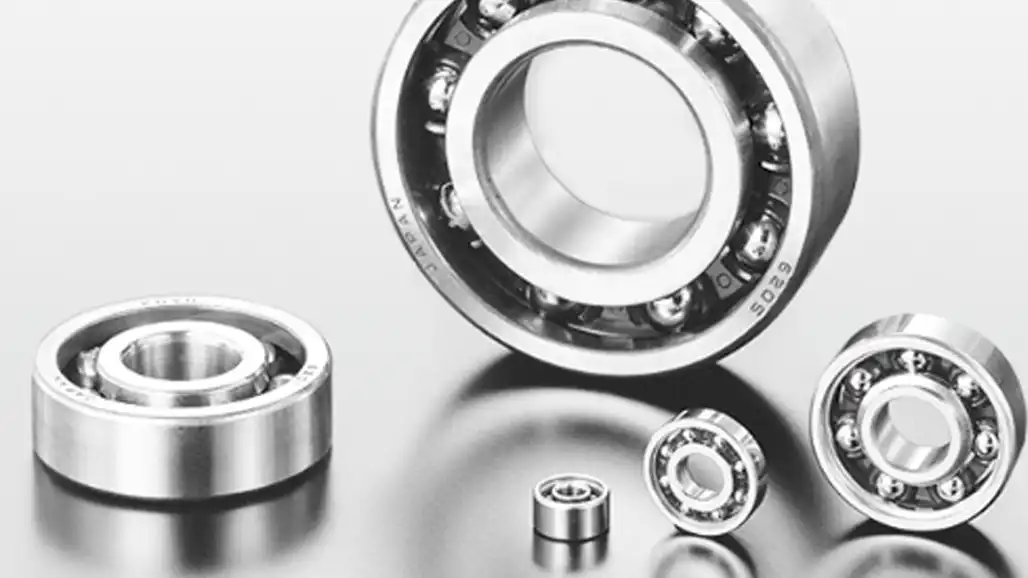
Let’s see the purpose of the bearings, and mechanical bearings are mainly used to prevent direct metal-to-metal contact between two elements, that are in relative motion. Bearings are basically important to prevent friction, heat generation to ensure that the machinery, engine can work smoothly.
They also transmit the load of the rotating element to the housing. This load may be radial, axial, or a combination of both. A bearing also restricts the freedom of movement of moving parts to predefined directions as discussed above.
Types of Bearings
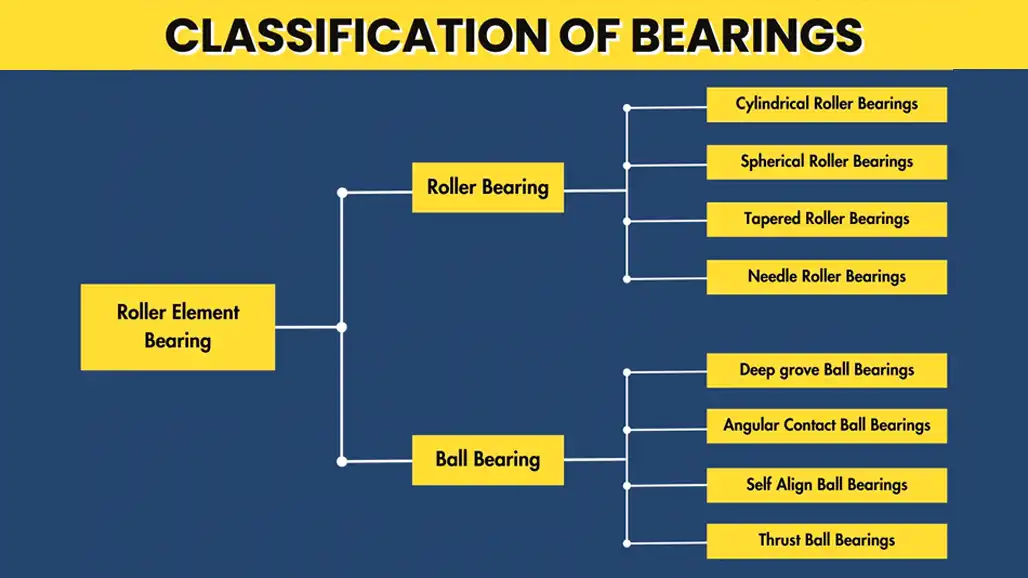
Here are some common types of bearings along with detailed descriptions:
Ball Bearings:
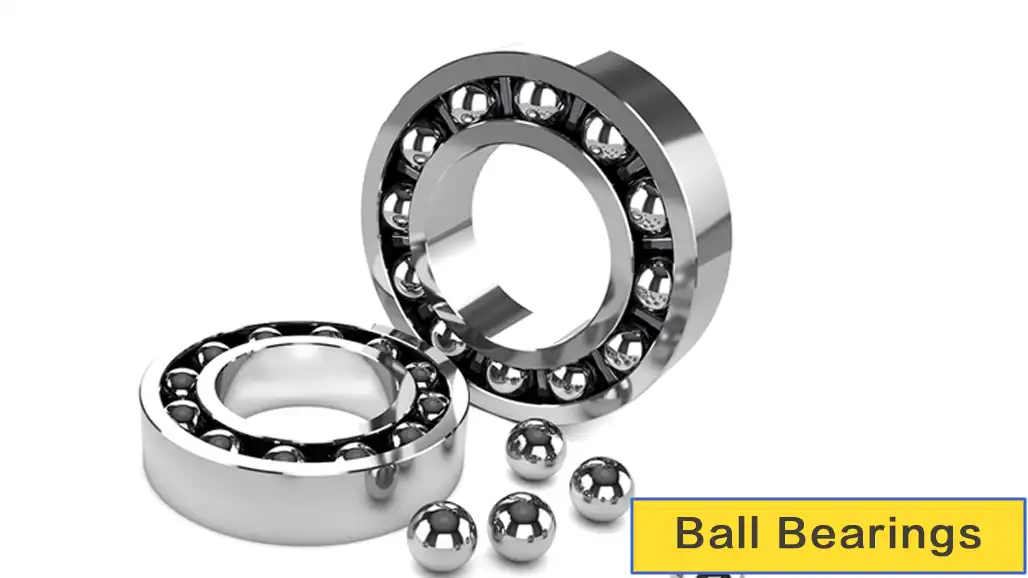
Ball bearings are one of the most common types of bearings. They use small spheres (balls) to reduce friction between the rotating components.
Applications: Widely used in applications where both radial and axial loads need to be supported, such as in wheels, conveyor belts, and electric motors.
Plain Bearings (Bushings):
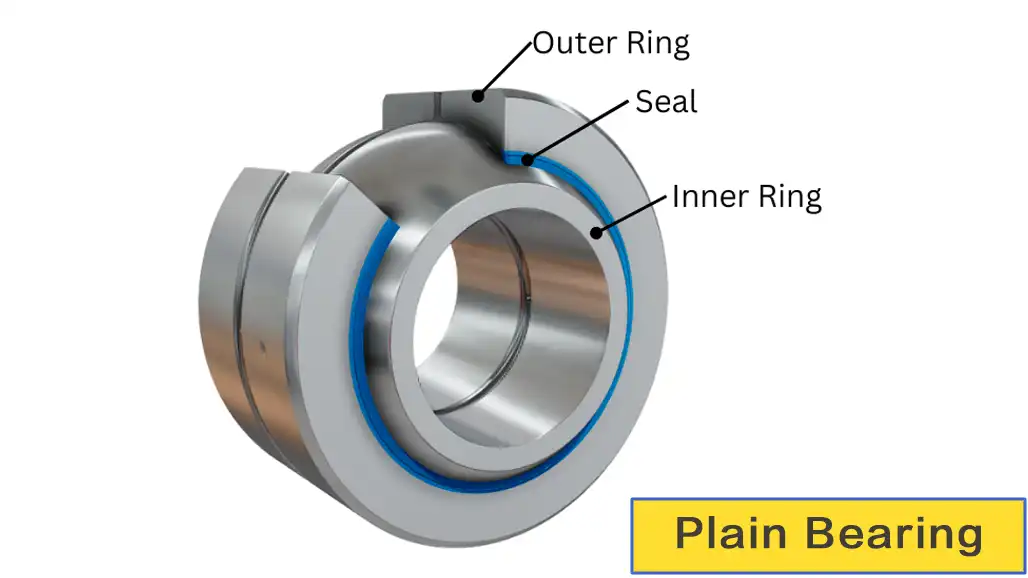
Plain bearings, also known as bushings, involve sliding surfaces without rolling elements. They are simpler in design and often used in applications with low-speed, high-load requirements.
Materials: Can be made of various materials, including bronze, brass, or polymer compounds.
Applications: Found in hinges, linkages, and certain types of industrial machinery.
Thrust Bearings:
Thrust bearings are designed to support axial loads, providing a means to manage force in one direction.
Types: Includes ball thrust bearings and roller thrust bearings.
Applications: Used in applications where axial loads need to be accommodated, such as in automotive transmissions and machine tools.
Angular Contact Bearings:
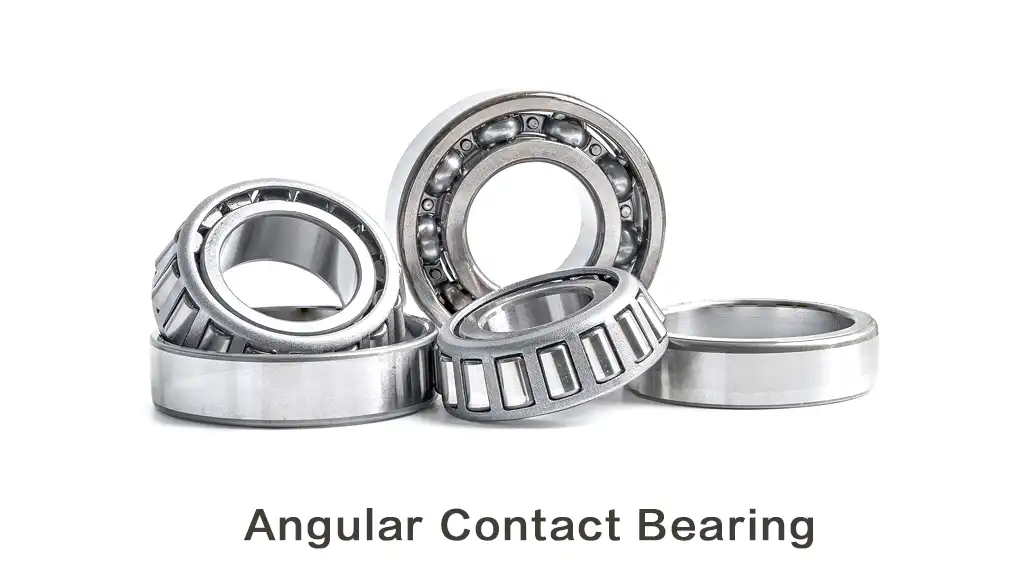
Angular contact bearings are designed to handle combined radial and axial loads. They have contact angles that allow them to support both types of loads simultaneously.
Applications: Commonly used in high-speed applications, such as in machine tool spindles and aircraft landing gear.
Deep-Groove Ball Bearings:

Deep-groove ball bearings are a specific type of ball bearing designed with deep raceway grooves in both the inner and outer rings. This design allows them to accommodate radial and axial loads in both directions.
Features: The deep grooves enable these bearings to handle higher radial loads and moderate axial loads. They are known for their versatility and widespread use.
Applications: Widely used in various applications, including electric motors, household appliances, automotive components, and industrial machinery where high radial loads are encountered.
Self-Aligning Ball Bearings:
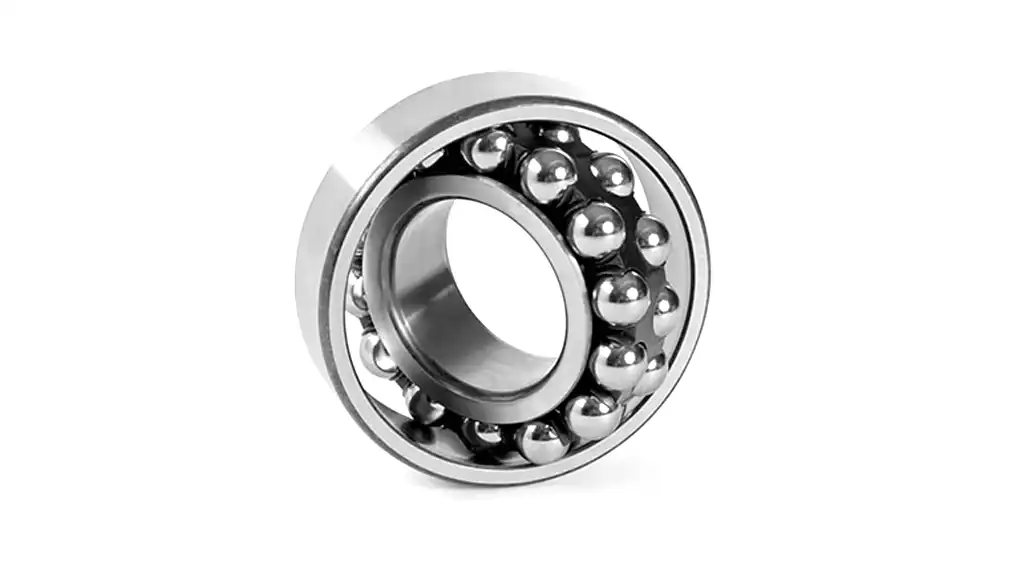
Self-aligning ball bearings are designed to accommodate misalignment between the shaft and housing without causing undue friction or premature wear. They have two rows of balls and a common spherical raceway in the outer ring.
Features: The unique design allows the bearing to self-align, compensating for shaft misalignment. This makes them suitable for applications where shaft deflection or misalignment may occur during operation.
Applications: Commonly used in applications with non-rigid mounting or where shaft deflection is likely, such as in conveyor systems, agricultural machinery, and textile machinery.
Roller Bearings:
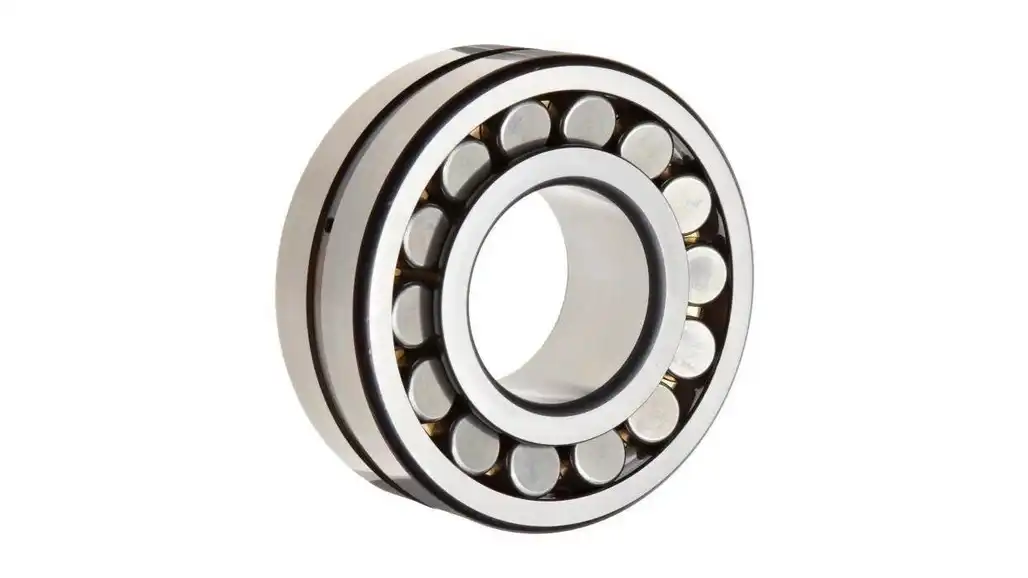
Roller bearings use cylindrical or tapered rollers to support loads. They provide higher load-carrying capacity compared to ball bearings and are suitable for applications with heavier loads.
Types: Includes cylindrical roller bearings, tapered roller bearings, and needle roller bearings.
Applications: Used in applications such as conveyor systems, gearboxes, and vehicle transmissions.
Types of Roller Bearings
Spherical Roller Bearings:
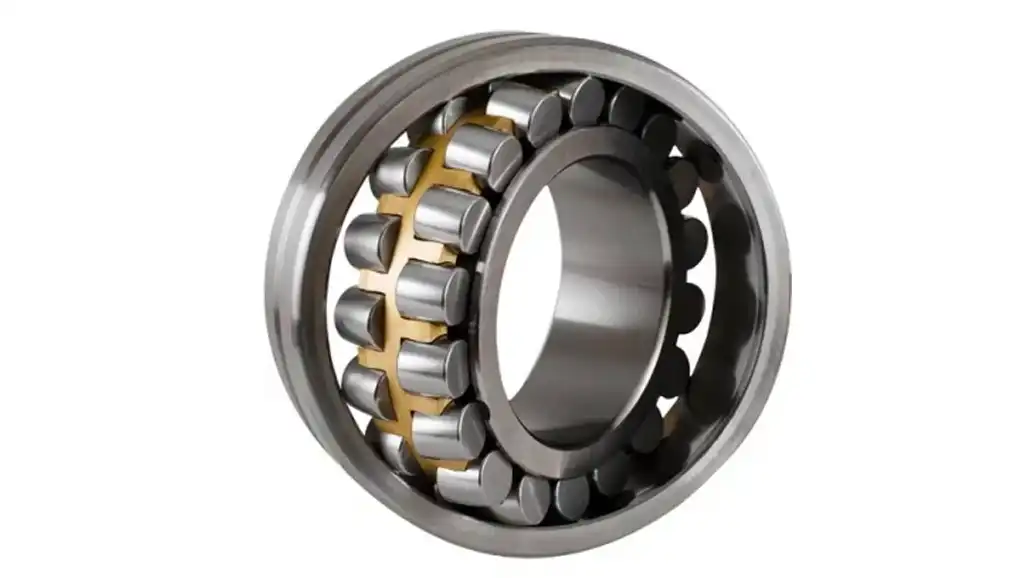
Spherical roller bearings have barrel-shaped rollers that align themselves with the concave outer ring. This design allows for misalignment compensation.
Applications: Commonly used in applications where misalignment might occur, such as in heavy machinery and industrial equipment.
Cylindrical Roller Bearings:

Cylindrical roller bearings use cylindrical rollers to provide support for heavy radial loads and limited axial loads. The rollers are longer than the diameter of the bearing, offering a high load-carrying capacity.
Design: The design includes cylindrical rollers held between inner and outer rings, with various configurations such as single row, double row, and multi-row designs.
Applications: Commonly used in applications where high radial loads are encountered, such as in machine tools, rolling mills, electric motors, and gearboxes.
Tapered Roller Bearings
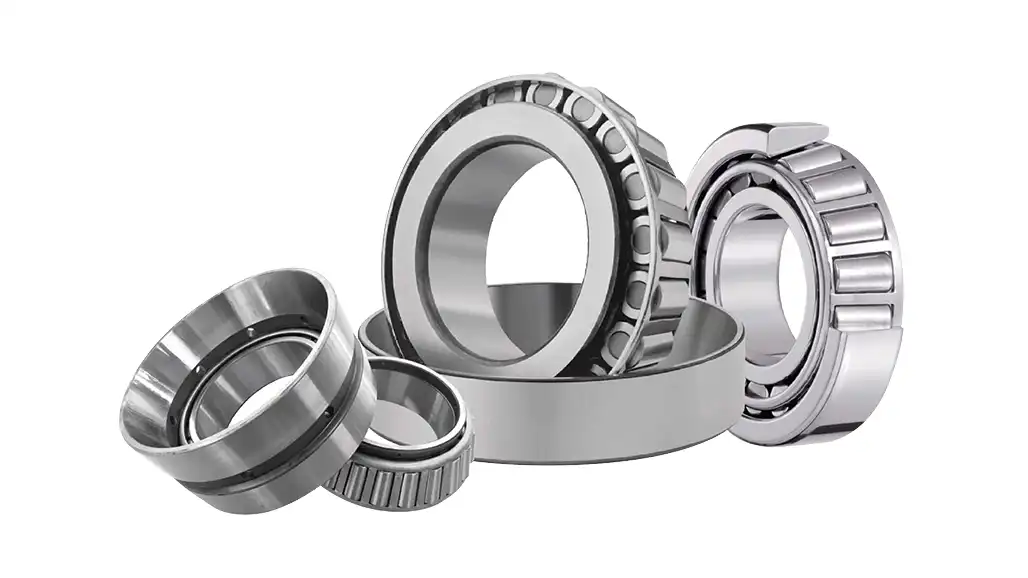
Tapered roller bearings consist of tapered inner and outer ring raceways and tapered rollers. They are designed to handle both radial and axial loads by providing a combination of radial and thrust (axial) load-carrying capacity.
Features: The tapered design allows these bearings to support high radial and axial loads in one direction. They are capable of handling heavy loads and are commonly used in applications with large axial forces.
Applications: Widely used in automotive applications, wheel bearings, gearboxes, and other machinery where the need for both radial and axial load support is essential.
Needle Roller Bearings:
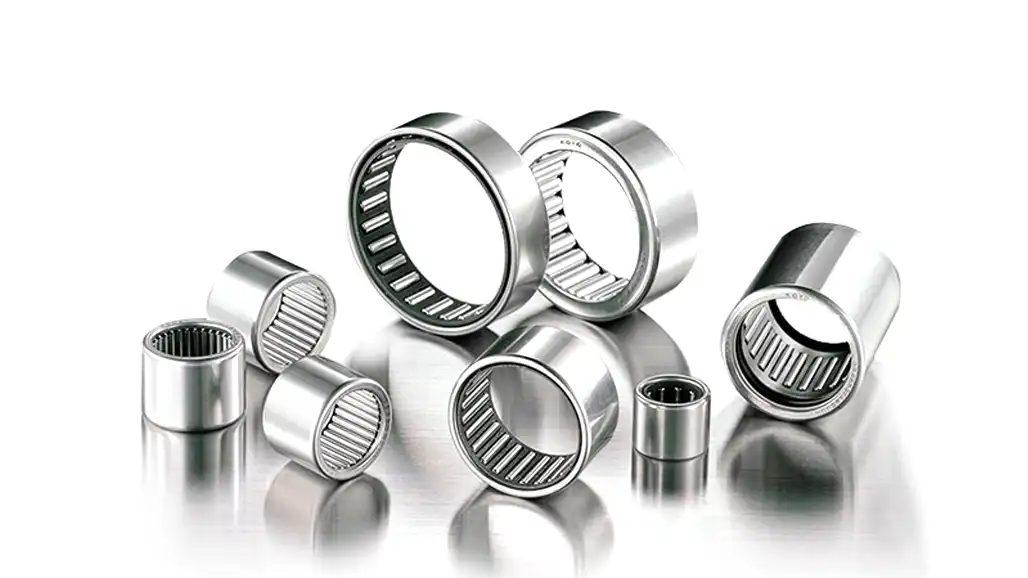
Needle roller bearings use thin cylindrical rollers with a high length-to-diameter ratio. These bearings are designed to handle high radial loads in limited space applications.
Features: Due to their compact design and small cross-section, needle roller bearings are suitable for applications with limited radial space. They are known for their high load-carrying capacity and relatively low rotational mass.
Applications: Commonly used in applications where space is limited, such as in automotive transmissions, industrial gearboxes, and small appliances.
Fluid Bearings:
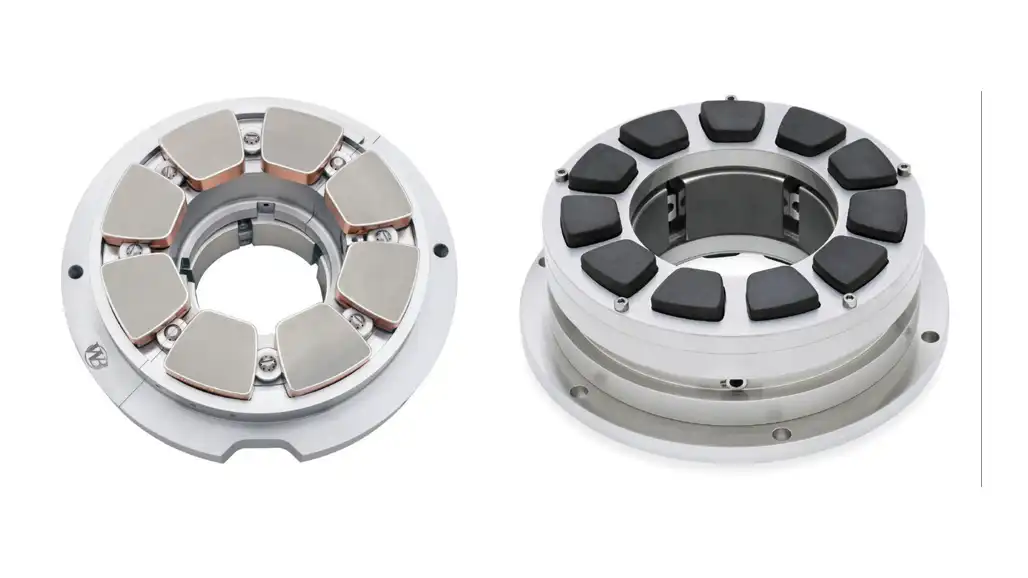
Fluid bearings, also known as hydrodynamic bearings, rely on a thin layer of fluid (usually oil) to separate the moving parts and reduce friction. The fluid film is generated by the relative motion between the rotating and stationary components.
Operation: These bearings create a hydrodynamic film that lifts and supports the rotating shaft, eliminating direct contact between surfaces. They offer low friction, minimal wear, and can operate at high speeds.
Applications: Fluid bearings are commonly used in high-speed rotating machinery, such as in certain types of motors, turbines, and computer hard drives.
Hydrostatic Bearings:
Hydrostatic bearings use a continuous flow of pressurized fluid to support the rotating or moving parts. The fluid is supplied under pressure to create a lifting effect, separating the bearing surfaces and reducing friction.
Operation: Unlike hydrodynamic bearings, hydrostatic bearings don’t rely solely on relative motion to generate the fluid film. Instead, an external pump supplies the fluid to the bearing, ensuring a constant and controllable fluid film.
Applications: Hydrostatic bearings are utilized in precision machinery, such as high-precision machine tools, where extremely low friction and high precision are required.
Hydrodynamic Bearings:
Hydrodynamic bearings, like fluid bearings, use the relative motion between rotating and stationary parts to generate a fluid film. The fluid film is created by the motion-induced pressure, lifting and separating the surfaces to reduce friction.
Operation: These bearings operate based on the principles of fluid dynamics and are self-generating, meaning the motion between components creates the necessary fluid film without external assistance.
Applications: Commonly found in various rotating machinery, such as large industrial pumps, turbines, and engines, where the benefits of self-generating fluid films are advantageous.
Magnetic Bearings:

Description: Magnetic bearings use magnetic forces to levitate and support rotating or moving components without physical contact. They utilize magnetic fields to suspend the rotor or shaft, eliminating the need for traditional mechanical supports.
Advantages: Magnetic bearings offer low friction, minimal wear, and the ability to operate in challenging environments. They are often employed in high-speed applications where contact-based bearings may not be suitable.
Applications: Used in industries such as aerospace, high-speed machining, and energy systems.
Active Magnetic Bearings:
Active Magnetic Bearings (AMB) are a type of magnetic bearing with an active control system that continuously adjusts the magnetic fields to maintain stability. Sensors and controllers actively monitor and control the position of the rotor.
Control System: The active control system adjusts the magnetic forces in real-time, allowing for precise control over the position and stability of the rotor.
Applications: Commonly found in high-precision machinery, such as advanced manufacturing equipment and certain types of turbomachinery.
Passive Magnetic Bearings:
Passive Magnetic Bearings use permanent magnets or magnetic repulsion to provide a stable magnetic field without an active control system. They rely on the inherent properties of magnets for stability.
Advantages: Simplicity of design and maintenance, with no need for an external power source or complex control systems.
Applications: Used in applications where simplicity and reliability are crucial, such as in some flywheel energy storage systems and certain rotating machinery.
How To Choose Different Types Of Bearings?

Choosing the right type of bearing involves consideration of various factors to ensure optimal performance and longevity in a specific application. Here’s a guide on how to choose different types of bearings:
Load Requirements:
Identify the types and magnitudes of loads (radial, axial, or a combination) the bearing will experience. Different bearings are designed to handle various load types and levels.
Speed and Operating Conditions:
Consider the rotational speed of the application. Some bearings are designed for high-speed operation, while others may be better suited for slower speeds. Take into account the environmental conditions, such as temperature and contaminants.
Space and Size Constraints:
Evaluate the available space for the bearing within the application. Some bearings, like needle roller bearings, are compact and suitable for limited space applications.
Precision Requirements:
Assess the precision needed in the application. High-precision machinery, such as machine tools, may require bearings with tight tolerances, like angular contact bearings or precision ball bearings.
Misalignment and Alignment Needs:
Consider whether the application involves misalignment between components. Self-aligning bearings, such as self-aligning ball bearings, are suitable for applications where misalignment is a concern.
Environmental Factors:
Take into account the environmental conditions, such as temperature, moisture, and exposure to corrosive substances. Choose bearings with materials and seals that can withstand the specific environmental challenges.
Lubrication Requirements:
Determine the lubrication method and requirements. Some bearings are designed for grease lubrication, while others may require oil lubrication. Consider the ease of maintenance and the application’s lubrication intervals.
Life Expectancy and Maintenance:
Evaluate the desired bearing life and the maintenance requirements of the application. Some bearings, like sealed bearings, may require less maintenance, while others may need periodic lubrication.
Cost Considerations:
Consider the budget constraints and the cost-effectiveness of the bearing solution. While certain bearings may offer advanced features, they might come with a higher cost. Evaluate the trade-offs between performance and budget.
Application-Specific Requirements:
Take into account any specific requirements unique to the application. For example, magnetic bearings might be suitable for applications where traditional bearings face limitations.
It’s crucial to consult with bearing manufacturers, engineers, or specialists to ensure that the chosen bearing type aligns with the specific requirements of the application. Additionally, considering the long-term costs, including maintenance and replacement, is essential in making an informed decision.
Conclusion
In summary, Bearings play a vital role in machinery, and roller and ball bearings are prominent among the varieties. Roller bearings, including cylindrical, spherical, tapered, and needle types, stand out for their impressive load capacity and versatility. On the other hand, ball bearings, such as deep groove and angular varieties, excel in reducing friction for smoother motion. Each category comes with its distinct advantages and drawbacks, catering to specific requirements.
Additional variations like plain, fluid, hydrostatic, hydrodynamic, and magnetic bearings provide alternative solutions for various operating conditions. Deliberating on these diverse bearing types ensures the achievement of optimal performance and durability in mechanical systems.

